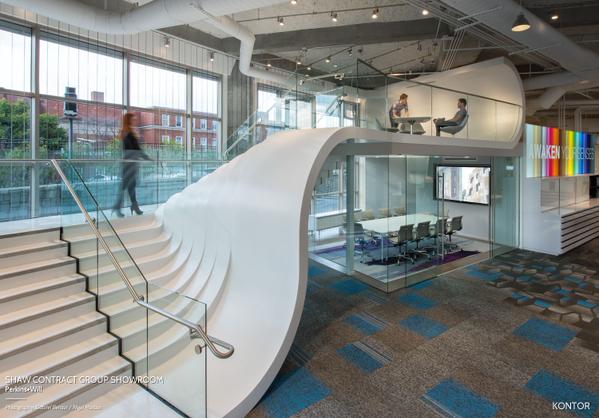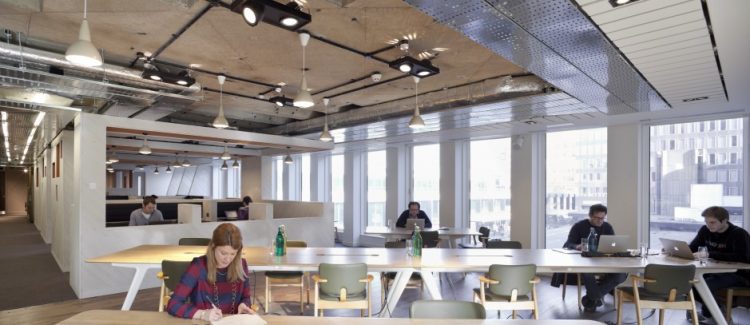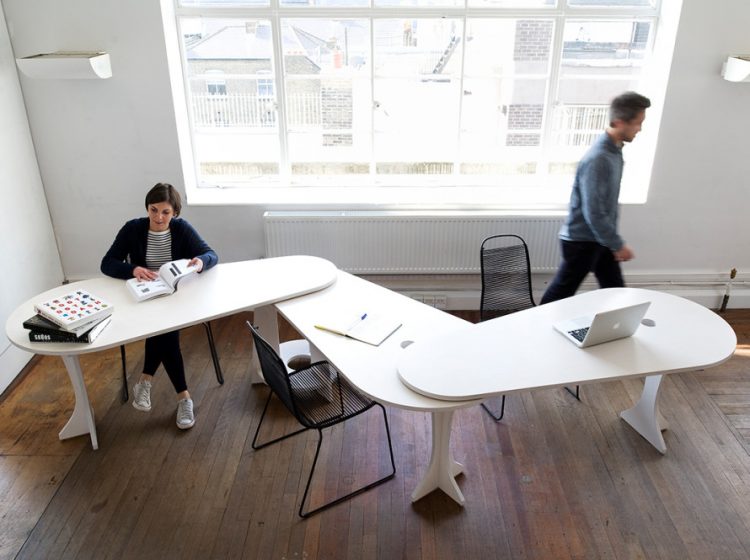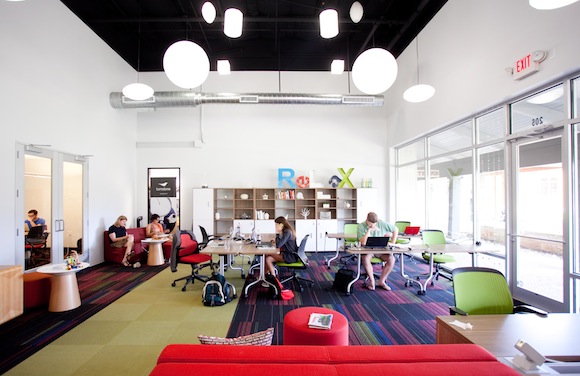William Hanley is a Vice President at Kontor, a “visual search and discovery platform for workplace design.” Together with Kontor’s director of European business development and architect, Florian Bolle, William will be participating in the premier Social Workplace conference, taking place in London, October 16th.
Kontor was founded by Kevin Ryan, “a luminary in the New York tech scene”, who also started Business Insider, Gilt, and various other successful companies. Kontor founder and CEO, Mia Lewin is a seasoned entrepreneur with a passion for design, alongside Andy Parsons, who is also a founder and CTO, who has a strong background in photo and search technologies. The company launched a private beta preview in June, and is preparing for a public launch in November.
We caught up with William and Florian to learn more about the visionary design platform and to find out why design plays such an essential role in the workplace of the future.
Hi William, can you please tell us about Kontor? Please describe the design of the space and how you realized what worked best for your community.
Kontor is a visual search and discovery platform for workplace design. We have built an unprecedented network that connects visionary companies, great architects, and innovative product makers using a combination of beautiful project photography, expert metadata, and a proprietary, design-focused search algorithm.
On Kontor, everyone involved with a workplace project can showcase their contributions, and anyone can discover interesting projects, create collections of images, and share them with each other. Think of it as a platform similar to Pinterest but tailor made for the design world.
Our own main office is a surprisingly spartan loft in Tribeca New York and our European headquarters, where Florian is based, is located in a coworking space in Paris, which is occupied by several other design-focused businesses.
How does Kontor envision the Social Workplace and how does it meet the needs of contemporary work styles?
Thanks to a combination of mobile devices, geographically distributed teams, and the global nature of contemporary work, the office has become less of place for performing tasks within a set window of time and more of a social space that facilitates personal interactions and serendipitous conversations. It sounds cliché, but fostering collaboration has become the workplace’s primary role now that we can all work anywhere.
You can find many examples of how this has shifted the design of the physical workplace on Kontor, but generally we see fewer and fewer partitioned work areas, and certainly fewer private offices, in favor of more flexible spaces and a range of different types of lounge-like spaces—from informal meeting areas to cafés to alcoves and hideaways that facilitate small gatherings.
How are the expectations of the modern workforce different today than they were 5 years ago?
The ability to work anywhere has changed how our professions and the ways that our lives intersect. At its worst, this had led to a lack of work-life balance, as we are now seemingly available at all hours of the day. At its best, it has created a sense of work-life integration that allows us to build a schedule that suits both our personal and professional needs. The key to staying on the positive side of this condition is flexibility and that also extends to office design.
How does Kontor address the needs of employers and employees today?
More than anything, employees expect the workplace to accommodate the ever-blurrier boundaries between their personal and professional lives—whether that means a specific set of amenities, a design aesthetic that fits their sense of professional identity, or a space that speaks to a particular office culture. We are a far cry from soulless rows of cubicles or even a generic open plan.
What types of modern design/technologies do companies incorporate into an “outdated” office space?
Contemporary companies require spaces unique to their businesses, brands, and the working style they wish to cultivate. How companies incorporate amenities into the office is a great example of how varied workplace design has become. Some employees might prefer things from dining to laundry to be accommodated inside the office—allowing great plans to be hatched over impromptu coffees or on-site happy hours—while others prefer an outward looking office with easy access to shops, cafés, and other amenities, where the formal workplace becomes a hub in a larger urban system.
How have these changes in the way we work influenced workspace design?
This has led to a proliferation of office types and design ideas, and a huge range of them can be discovered on Kontor. With work by 300 design firms and 100 product brands tagged in the context of built spaces, the platform shows the breadth of contemporary workplace design. It is full of surprising architectural moves and innovative ideas from around the world. You can find anything from playful tech offices to button-up law firms and you can also search for designers or products that have similar qualities.
When we officially launch, you will also be able to share images that you find with colleagues and clients and to follow designers, brands, and people in the interiors world to get updates on their work.
What types of clients typically gravitate towards the designers of innovative offices? Why do you think that is?
Technology has enabled the new ways of working that we just discussed, and so it’s not surprising that many of the innovations that we’re seeing in workplace design started there.
We also see creative industries from design to advertising pushing new ideas about workplace design. It’s crucial in those fields to not only create an inspiring environment for employees but to also have a space that projects a company’s aesthetic and brand when clients visit. This is one of the reasons that we frequently feature the best of particular industries on Kontor. We want to show how designers are experimenting with different ideas in different fields.
What do you think that social work environment offers that a traditional one no longer can?
The workplaces that are built more on relationships and interaction rather than on a traditional, mechanical idea of efficiency, actually allow for more specificity in the way their inhabitants work. A space that allows teams to take control and to find unique systems and rhythms that help them achieve goals and develop new ideas will foster far better results for companies.
How important is the role of design in the workplace? Do you believe that it influences productivity and worker wellbeing?
Whether you’re a startup huddled around a communal table or a global company opening your newest headquarters, having the right architect or designer is crucial. Everyone needs a complementary design team to creatively address the many, often competitive interests—from employee comfort to construction costs, as well as sustainability and ecological considerations—that go into a workplace project.
At base, a well-designed office can mean the difference between employees fighting with their surroundings and employees aided and inspired by them.


















Recent Comments